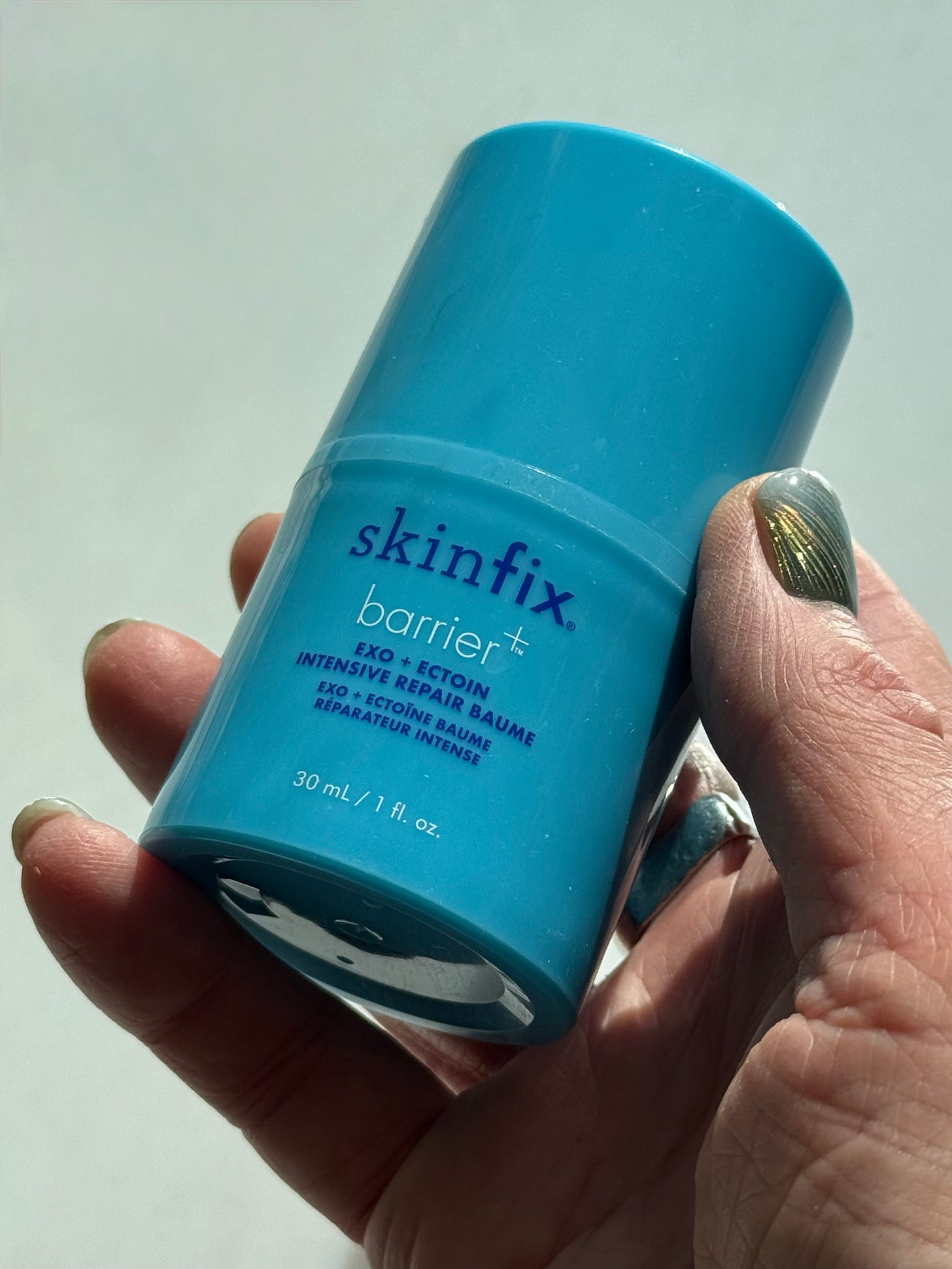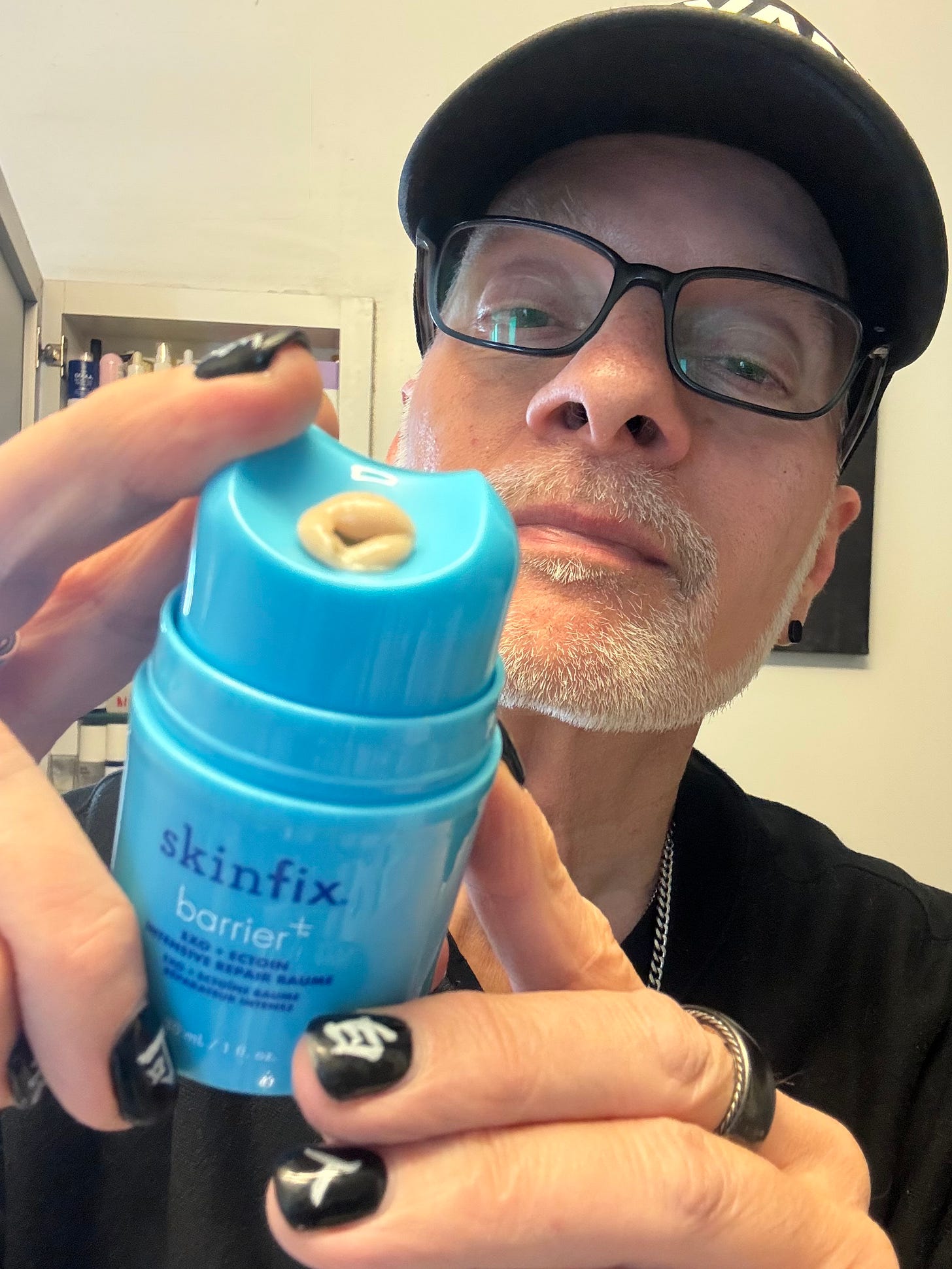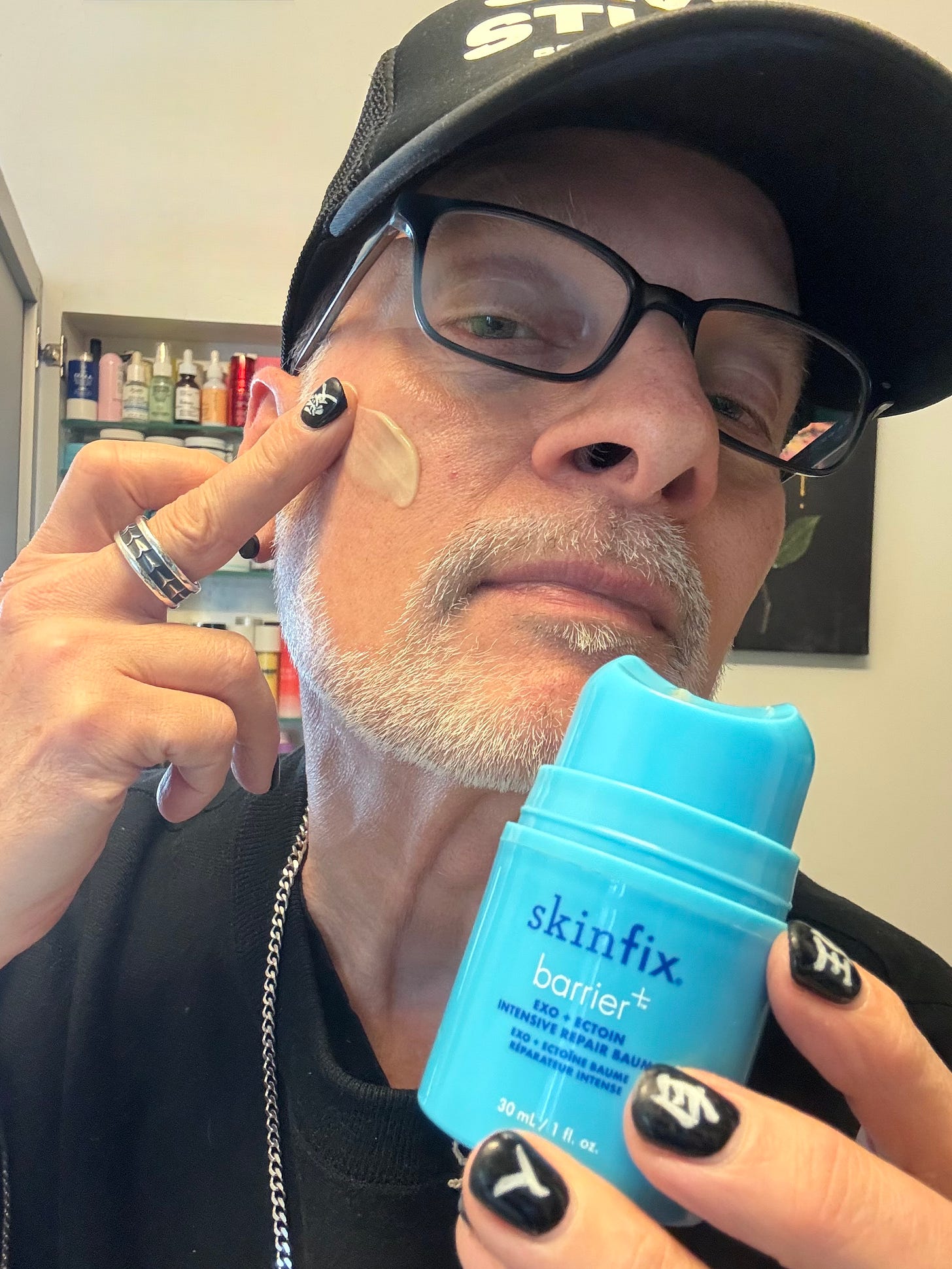Demystifying Exosomes and the Hot New Exosome Innovation You Need in Your Routine
Q&A: What are exosomes? What do exosomes do for skin? Are exosomes better than retinol?
One of my favorite things about my work as a beauty writer, blogger and podcaster is being at the forefront of new product innovation. In my 30+ years in beauty, I have seen every trend imaginable – some fleeting, some enduring.
It seems like we’re done with slugging. And I don’t hear about skincare cycling any more. The “retinol alternative” Bakuchiol sure had its 15 minutes. Time’s up!
Even collagen creams with actual collagen in them have passed their sell-by date as consumers learned that topical collagen can’t penetrate the skin barrier to restore depleted collagen levels. The “Dalton Rule” can’t be broken by beauty marketers just because it doesn’t fit their marketing narratives.
For more on the Dalton Rule and which ingredients penetrate the skin barrier (and which don’t!), catch my podcast episode “Demystifying Peptides – the Secret to Getting Your Bounce Back”.
Vitamin C serums and anti-aging creams with Retinol are certainly here to stay.
Many of the most enduring ingredient and product trends have their roots in dermatology – often employed in in-office procedures before reaching the consumer marketplace. Retinoids like topical tretinoin were first used by dermatologists in the 1960s before becoming widely available in the 90s. Chemical peels with Glycolic Acid have actually been offered by derms as early as the 1950s.
In my work this past year as a product innovation judge in the Beauty Matter NEXT awards, I came across a fascinating new ingredient called exosomes. Key to intercellular communication, these mysterious skin-rejuvenating substances have been used topically by derms for more than a decade.
What Are Peptides? Why They're Key to Your Skin's Youthful Bounce.
I was recently invited to appear on the Radiance Revealed podcast hosted by board-certified dermatologist Dr. Jen Haley. The topic: the Five Hottest Ingredients in 2025.
Exosomes are just now making their way into consumer products. Innovations like the Osmosis StemFactor Growth Factor Serum and Plated DAILY Serum feature exosomes as their key technology for stimulating collagen renewal and repairing signs of aging – supplanting harsher retinol treatments.
The most broadly available anti-aging cream with exosomes is the Skinfix Exo + Ectoin Intensive Repair Baume – the first exosome treatment to hit Sephora shelves.
My detailed review of Exo + Ectoin Intensive Repair Baume is just below.
What are exosomes?
The long, complex explanation is that exosomes are nano-sized extracellular vesicles secreted by various cell types, including stem cells, cancer cells, and immune cells. Exosomes carry biomolecules like proteins, lipids, mRNA and DNA, which they use to facilitate intercellular communication and regulate physiological processes in the body.
In my recent conversation with Dr. Jen Haley, a board-certified dermatologist and host of the Radiance Revealed podcast, I asked Dr. Jen this exact question in an effort to demystify exosomes.
Her more simple description:
“They’re basically little packages of information. So our cells, pretty much most cells in the body, produce these little packages of information that communicate from cell to cell. And cell-to-cell communication is really important because the body works as one unit. The skin is not separate from the brain. It's not separate from the liver or the kidneys or the heart. Everything is communicating all at once.
So exosomes are derived from certain cell types, but they are produced in our bodies naturally as little vesicles or sacks – or packages is the word I like to use. They're packages of messages. We always want to ask, what is the message? What is the message that’s being sent?
And these messages are basically derived from typically mesenchymal cells. So from adipose tissue or fat tissue, bone marrow or umbilical cord tissue; they’re produced by those. And then we hope they send messages to enhance wound healing, to stimulate collagen production and to reduce inflammation.”
Learn more about exosomes on the Skincarma Pod: Demystifying Exosomes with Board Certified Dermatologist Dr. Jen Haley here.
Sources: NIH, National Library of Medicine, PubMed Central - Topical Application of Exosomes Derived from Human Umbilical Cord Mesenchymal Stem Cells in Combination with Sponge Spicules for Treatment of Photoaging
Skinfix Exo + Ectoin Intensive Repair Baume Product Review
The Skinfix Exo + Ectoin Intensive Repair Baume is the brand’s most innovative anti-aging treatment to date. I’m a longtime fan of the iconic moisturizer for dry skin – the Skinfix Barrier+ Triple Lipid-Peptide Face Cream.
TLPC has been a skin savior of mine every winter for years now. I recommend it to friends and followers more than any other moisturizer for replenishing skin lipids – and have featured it on my blog and podcast multiple times.
As important as lipid replenishment is for overall skin health and optimizing skin barrier function, it’s not what most people would consider “anti-aging.” The anti-aging category is broad for sure; but when I think about what classifies a product as an anti-aging treatment, it’s loss of collagen, fine lines, wrinkles and dark spots – the consequences of photodamage.
Featuring one of the hottest skincare ingredient trends of 2025, exosomes, the Exo + Ectoin Intensive Repair Baume could be straight out of your dermatologist’s office. In fact, as with retinoids and Glycolic Acid, exosomes first appeared in in-office dermatology procedures about 10 years ago.
The facilitators of cell-to-cell communication, these mysterious substances offer many of the benefits of the gold-standard in anti-aging, Retinol – without the complications of retinoids. Among the most important benefits of topical exosomes is the stimulation of collagen and elastin production, which leads to an improvement in visible signs of aging – a restoration of skin’s more youthful qualities.
Skinfix declares their new anti-aging balm to be “inspired by in-office procedures and the healing balms derms use to enhance their results,” something I do not doubt. In fact, in my conversation with Board Certified Dermatologist Dr. Jen Haley on the Skincarma Pod: Demystifying Exosomes, she does in fact share that’s she’s used exosomes in her practice for several years.
But the benefits of topical treatments like Exo + Ectoin Intensive Repair Baume at home are not the same as the results seen with in-office derm procedures. Dr. Jen uses exosomes to heal skin post-procedure and with microneedling to assure penetration through the skin barrier. That damn Dalton Rule!
Given the usual skincare marketing mania, clinical testing is key for establishing a product’s ability to deliver on more significant claims. Not consumer perception studies that express what a user agrees to in a marketing survey; but legitimate clinical evaluation.
And I’m heartened to share that Skinfix did the work to prove performance and efficacy. In image analyses of 37 subjects in an 8-week clinical study, “100% showed significant improvement in the look of fine lines and wrinkles after 4 weeks and an average of 20% visible wrinkle reduction after 8 weeks.”
Exo + Ectoin Intensive Repair Baume delivers. That’s the kind of clinical proof I expect to see from the best Retinol face creams like the Remedy for Dark Spots Nightly All in One Treatment and clinically proven peptide serums like the Paula’s Choice Pro-Collagen Multi-Peptide Booster.
In addition to high-performing exosomes, the Skinfix Exo + Ectoin Intensive Repair Baume is designed with growth factor peptides and Ectoin – a trending humectant which has a superior hydrating benefit than Hyaluronic Acid.
How can Exo + Ectoin Intensive Repair Baume be incorporated into your skincare routine? Well, I’ve used it as both an alternative to Retinol and an adjunct to Retinol.
As an alternative to Retinol, it can be used on alternating nights when you’re not applying a retinoid. Or, if your skin doesn’t tolerate Retinol well, Exo + Ectoin Intensive Repair Baume can deliver similar benefits.
As an adjunct to Retinol, it can be used alongside a potent Retinol face cream to enhance its effects or mitigate unwanted side effects – including extreme dryness, flakiness, and sensitization. After all, derms use exosomes to speed up healing post-procedure.
With the rich, texture of a skin salve, the Skinfix Exo + Ectoin Intensive Repair Baume is the perfect companion to Retinol – or the perfect replacement.
Pros & Cons
What I like about it: The Skinfix Exo + Ectoin Intensive Repair Baume is one of the most innovative new anti-aging treatments to come to market this year. I love its clinically proven anti-aging benefits and versatility as either a replacement for a Retinol face cream or a treatment for mitigating the common side-effects of retinoids. The soothing salve-like texture is superb!
What I don’t like about it: I like everything about it.
Who it’s for: All skin types.
SHOP THE BLOG: Want to try it for yourself? Purchase the Skinfix Exo + Ectoin Intensive Repair Baume for $69 here.
Product links:
Skinfix Exo + Ectoin Intensive Repair Baume
Osmosis StemFactor Growth Factor Serum
Paula’s Choice Pro-Collagen Multi-Peptide Booster
Remedy for Dark Spots Nightly All in One Treatment






